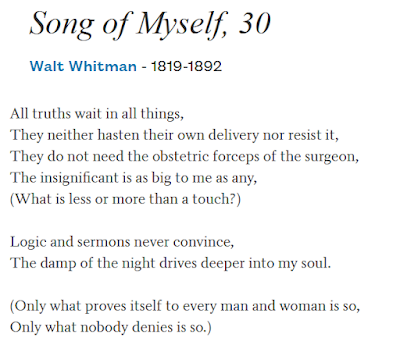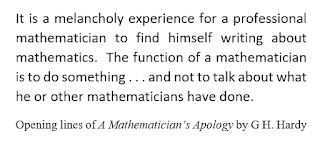One of the rewards from time spent with mathematics or from time spent with poetry is the array of multiple meanings that we find . . . usually not all-at-once but accumulating. A master of word-play with mathematical terms and ideas is Mathematics Professor Colin Adams of Williams College. Each time I attend the annual Joint Mathematics Meetings I look on the schedule for Mathematically Bent Theater -- with a presentation by Adams and the Mobiusbandaid Players. Here is a link to an interview with Adams; and here on YouTube are videos of some of the mathy presentations; EXPLORE and ENJOY!
To add a bit of poetry to this post, I offer below a photo of a visual poem by scientist and writer Bern Porter, found in the anthology Against Infinity.
 |
| "Formula" -- by Bern Porter |
Against Infinity is an anthology of mathy poems edited by Ernest Robson and Jet Wimp and published by Primary Press in 1979 -- now out of print but available at used-book websites. Here is a link to other selections from Against Infinity in earlier postings in this blog.
















